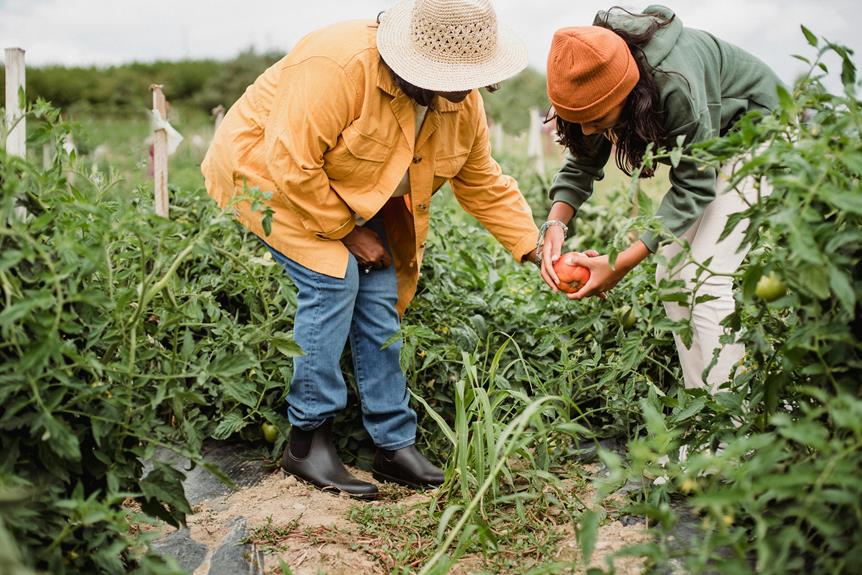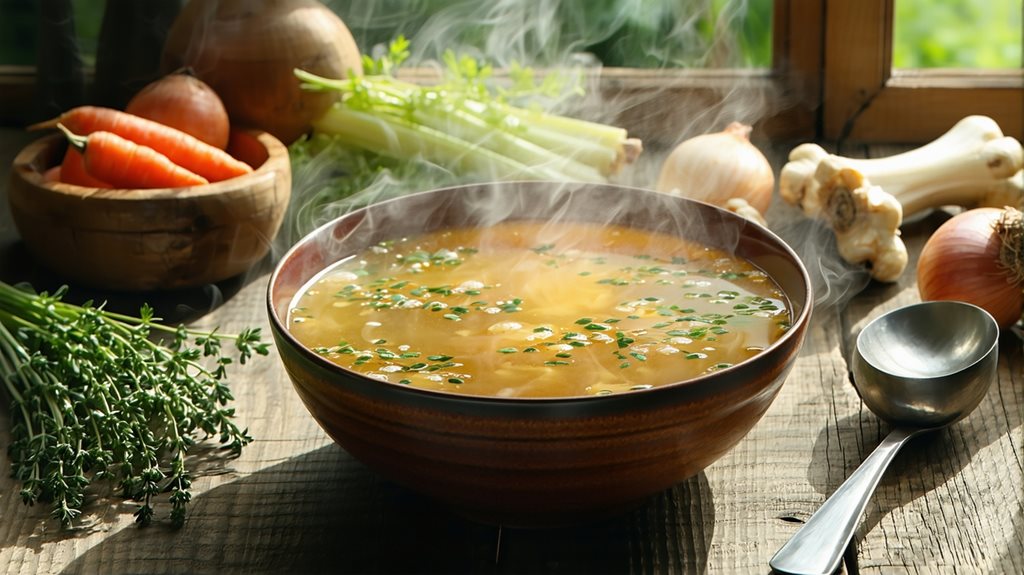Have you ever considered growing peppers in an AeroGarden? It's entirely feasible. This hydroponic system, which uses water enriched with nutrients rather than soil, can support a variety of pepper plants, from the sweet bell to the fiery jalapeño. You'll need to start by choosing the right seeds and understanding how to manage the specific needs of pepper plants in such a controlled environment. However, as simple as it might sound, success hinges on several factors, including the management of light and temperature. Curious about how to optimize these conditions to guarantee a robust harvest of home-grown peppers? Let's explore the nuances of nurturing these vibrant plants in an unconventional garden.
Key Takeaways
- Peppers can be successfully grown in an AeroGarden using water and nutrients instead of soil.
- The AeroGarden system includes LED lights and automatic watering to support pepper growth.
- Choose compact pepper varieties suitable for the confined space of an AeroGarden.
- Regular monitoring and adjusting of nutrient levels are crucial for healthy pepper plants.
- AeroGarden allows for the indoor cultivation of various peppers including bell, jalapeño, and serrano.
Understanding the AeroGarden System
Prior to delving into pepper cultivation, understanding how the AeroGarden system functions is important. You'll appreciate the control you have over every aspect of the growing process with this advanced hydroponic setup. The system fundamentally uses water infused with nutrients instead of soil, promoting faster and healthier growth of your plants.
Firstly, you set up the seed pods in the AeroGarden, where they're automatically supplied with ideal amounts of water and nutrients. The built-in LED lights mimic natural sunlight, providing your pepper plants with the energy they need to grow efficiently. You can adjust these lights based on the growth stage of your peppers, giving you precise control over their development.
Monitoring is straightforward, too. The AeroGarden's control panel alerts you when it's time to add more water or nutrients, and you can even set reminders for regular check-ups. This feature ensures your peppers receive consistent care, necessary for robust growth.
Additionally, the system's pumps circulate water continuously, ensuring that nutrients are evenly distributed to the roots of your plants. This prevents common issues like root rot and nutrient burn, both of which can be detrimental to pepper plants. With AeroGarden, you're set to achieve ideal growth conditions, leading to a successful harvest.
Types of Peppers You Can Grow
Now that you understand how the AeroGarden system works, let's explore the different types of peppers you can grow in it. The beauty of using an AeroGarden is that you're not limited to one or two varieties; you can choose from a wide array that suits your taste and culinary needs.
Here are some options that thrive particularly well in this controlled environment:
- Bell Peppers: Imagine crisp, colorful bell peppers growing right at your fingertips. You can harvest them green or let them ripen to red, yellow, or orange for a sweeter flavor.
- Jalapeño Peppers: Perfect for adding a kick to your dishes, jalapeños can be picked when they're green for mild heat or left to turn red for a spicier taste.
- Banana Peppers: These long, yellow beauties are mild and sweet, ideal for salads, sandwiches, or stuffed recipes.
- Serrano Peppers: If you prefer a hotter variety, serranos offer a fiery option for salsas and sauces.
- Shishito Peppers: Mostly mild, but with the occasional spicy surprise, shishitos are great for blistering and serving as a tasty appetizer.
Each pepper brings its unique flavor and level of heat, allowing you to tailor your garden to your specific preferences and culinary adventures. Take control and grow a diverse array of peppers right in your own home.
Setting Up Your AeroGarden
Once you've chosen your favorite peppers, setting up your AeroGarden is the next step to bring your indoor garden to life. First, you'll need to make sure you have all the necessary components: the AeroGarden unit, grow lights, seed pods, and liquid nutrients.
Start by placing the AeroGarden on a stable, flat surface near a power outlet but away from direct sunlight, which can interfere with the growth cycle.
Next, insert the seed pods into the pod slots in your AeroGarden. Confirm they're seated properly; this precision will pay off with robust plant growth. After the pods are in place, fill the reservoir with water up to the fill line. It's crucial to use clean, filtered water to prevent any impurities from affecting your peppers' development.
Now, add the prescribed amount of liquid nutrients. These nutrients are essential for your peppers, as they provide all the necessary food your plants will need in an easily absorbable form.
Finally, turn on the grow lights. They should be set to run for at least 14-16 hours per day to mimic natural sunlight.
You're now in full control of your indoor pepper garden. Monitor and adjust as needed to optimize growth.
Choosing the Right Pepper Seeds
After setting up your AeroGarden, it's time to select the best pepper seeds for your indoor garden. Choosing the right seeds is vital for maximizing your control over the growing process and ensuring a bountiful harvest.
When you're picking seeds, consider these key factors:
- Variety: Opt for dwarf or compact varieties specifically suited for indoor environments. These are engineered to thrive in smaller spaces and under artificial light conditions.
- Heat Level: Decide how much heat you can handle. Ranging from sweet bell peppers to fiery habaneros, the heat level directly affects your culinary uses.
- Color and Flavor: Think about the visual appeal and taste you prefer. Peppers come in a spectrum of colors including red, yellow, green, and even purple, each offering distinct flavors.
- Growth Time: Check the maturity period. Some peppers mature quicker, giving you a faster turnaround from planting to picking.
- Disease Resistance: Look for seeds that are resistant to common diseases. This will give you an edge in maintaining a healthy garden, minimizing your need to intervene with chemical treatments.
Select carefully, as the right seeds will empower you to manage your garden's success effectively.
Planting and Germination Tips
To guarantee successful germination, plant your selected pepper seeds in your AeroGarden's pods according to the provided instructions. Ensure each pod is snugly fitted into its slot. This precise positioning helps control the micro-environment each seedling will thrive in, giving you the upper hand from the start.
Here's a concise overview of key factors:
| Factor | Importance |
|---|---|
| Pod Placement | Ensures ideal exposure |
| Water Level | Critical for seed contact |
| Labeling Pods | Tracks variety progress |
Make sure the water level in your AeroGarden is maintained as per the markers. This isn't just about keeping your plants hydrated; it's about ensuring that the seeds remain in constant contact with water, without being submerged. It's a delicate balance that you'll master with attention.
Label each pod by variety. This isn't just organizational; it allows you to adjust care based on each pepper's specific needs and track their progress individually, leading to maximized growth potential. Taking these controlled steps ensures that your pepper plants germinate efficiently and are positioned for robust growth, putting you in command every step of the way.
Essential Care for Pepper Plants
Now that your pepper plants have sprouted, it's crucial to focus on their ongoing care to ensure robust growth and plentiful yields. You've got the power to shape their environment and maximize their potential with just a few strategic moves.
- Pruning: Imagine your plants as miniature trees, where unnecessary branches drain crucial energy. Snip off any small or weak branches and leaves to redirect energy to the strongest parts of your pepper plants. This will help them grow taller and stronger.
- Pollination: Visualize each flower on your plant as a potential pepper. Gently tap or shake the branches to mimic the buzzing of bees, ensuring pollen spreads effectively. This manual pollination boosts fruit set significantly.
- Nutrient Supply: Picture your nutrient solution as the lifeblood of your plants. Regularly check and maintain the right nutrient levels. A balanced feed encourages vibrant, healthy growth.
- Root Care: Think of the roots as the foundation of a house. Keep them strong by occasionally cleaning the Aerogarden's water basin to prevent any buildup of harmful residues.
- Observation: Keep a keen eye like a hawk on your plants. Watch for signs of distress or disease. Early detection allows you to act swiftly, keeping your plants thriving under your watchful control.
Managing Light and Temperature
Managing light and temperature is essential for the health and productivity of your pepper plants in an Aerogarden. You've got to get the balance just right to guarantee your peppers thrive. Peppers love light—lots of it. Aim to provide them with 14 to 16 hours of high-quality light each day. Your Aerogarden's built-in LED system is perfect for this, as it delivers a full spectrum of light, which is critical for maximizing growth.
Temperature control is equally important. Peppers prefer a warm environment, ideally between 70°F and 80°F. Anything below or above this range can slow down growth or even harm your plants. Keep an eye on the ambient temperature of the room where you've placed your Aerogarden to ensure it doesn't fluctuate too much.
Here's a handy table to help you monitor and adjust the light and temperature for best growth:
| Factor | Optimal Range |
|---|---|
| Light Duration | 14-16 hours/day |
| Light Quality | Full spectrum |
| Day Temperature | 70°F – 80°F |
| Night Temperature | 65°F – 70°F |
| Temperature Consistency | Stable |
Harvesting Your Peppers
Once your peppers are plump and their color deepens, they're ready to be harvested. This stage is vital for maximizing flavor and texture, ensuring you make the most of your Aerogarden efforts. Take control of your harvest to achieve the best results by following these steps.
- Assess the color: Make sure the peppers match the expected hue for their variety, indicating peak ripeness.
- Gently squeeze: Feel for firmness. A slight give suggests they're ripe, whereas too soft may mean overripeness.
- Check the size: Compare them to the size guidelines for the specific type of pepper you're growing. They should be close to the typical dimensions.
- Snip, don't pull: Use a pair of clean, sharp scissors or pruning shears. Cut the stem above the fruit, leaving a short piece attached. This technique prevents damage to the plant and the fruit.
- Handle with care: Hold the pepper by the stem while cutting, and avoid squeezing the fruit. This preserves the shape and texture of your peppers.
Troubleshooting Common Issues
Let's tackle some common issues you might encounter while growing peppers in your Aerogarden.
First off, if you're noticing slow growth or pale leaves, it's likely a nutrient deficiency. You've got to keep an eye on the nutrient levels, ensuring you're following the feeding schedule closely. Don't just guess; measure precisely to maintain control over your plant's health.
Another frequent hiccup is inadequate pollination. Peppers are self-pollinating, but indoors, you don't have bees or wind to help out. You'll need to take charge. Gently shake your plants or use a small brush to transfer pollen from one blossom to another. This can greatly enhance your pepper yield.
If you spot any signs of pests, like aphids or spider mites, act swiftly to regain control. Use an organic insecticidal soap to safely handle these invaders. It's important not to let the problem escalate. Regular inspections can prevent major infestations.
Lastly, watch out for root rot, which is often a result of overwatering. Make sure your Aerogarden's water pump is functioning correctly and adjust your watering schedules based on the plant's stage of growth. You're in command here, and with careful monitoring, you can keep your pepper plants thriving.





Konnichiwa! (Hello!) I'm Pat Tokuyama, a Japanese tofu cookbook author, who travels for music, food, and adventure. If you like Japanese tea, checkout some of the newestorganic japanese tea, matcha bowls and noren and more!
** Curious about the Plant Based Japanese Cooking Club? ** Learn more here!